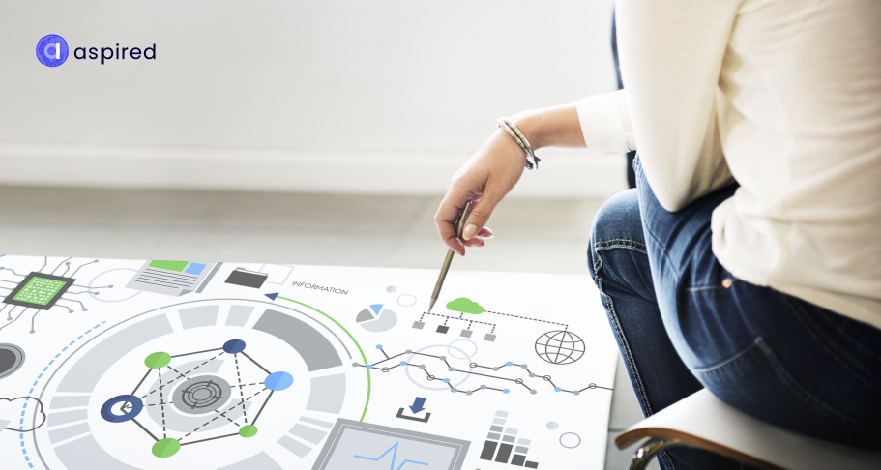With the advent of remote work, employees worldwide became accustomed to working from the comfort of their homes and enjoying a heightened level of flexibility. However, with the COVID-19 pandemic coming to a close, it was finally time to return to the office, but the work-from-home culture would influence this return to a great degree.
This influence gave birth to the hybrid office model, benefiting both employees and employers. Employees gained their desired level of flexibility while employers saw reduced operational and infrastructural costs. This trend became popular in the post-pandemic era as numerous companies transitioned from traditional to hybrid offices.
This number has only increased since then, as shown by how 62% of the world's employees work in hybrid offices while 16% are still working remotely. However, this transition has caused several changes, especially regarding office layout and design. To understand this need for change, we must know the factors that support a flexible workplace.
Factors That Support a Hybrid Workplace
Hybrid offices house employees working from home and working full-time onsite. To meet their needs, the three following design factors have to be focused on.
Engagement: Designing the workplace with a range of settings that are human and engaging
Equity: Focusing on inclusion and equity irrespective of work location
Ease: Providing easy-to-navigate virtual and physical experiences that embody fluid and accessible designs
Now that we know what to focus on let's look at the basic hybrid office layout.
Hybrid Office Layout; The Basics
A hybrid office provides a workspace that's a one-size-fits-all solution for both onsite and remote employees. Of course, as all companies are unique, the design for each will also follow suit. However, a few emerging trends are seen in today's hybrid offices. These include virtual chat rooms enabling both types of employees to unite and brainstorm, where their ideas can bounce off one another.
Such novel office designs can kill two birds with one stone by initiating innovation and idea generation and making employees happier through positive engagement. This can translate into an increase in both productivity and effectiveness. In addition, such a layout can change the workplace into a calm oasis where individuals can create a purposeful divide between work and home life.
Planning To Make a Hybrid Office?
Creating a collaborative environment between varying work models is a paradoxical task. Simultaneously nurturing collaboration and independence can seem like a fruitless endeavor. Still, we've found that the answer to this problem is a combination of flexibility and agility, which can foster the willingness to experiment and a growth mindset within hybrid offices.
With this in mind, we have to embellish our approach through the following three pillars that lay the foundation of hybrid office design.
Creativity
Design is synonymous with imagination and creativity, and these elements should be leveraged to create an atmosphere that aligns with what an organization wants its employees to achieve. Thus, creating meeting rooms and personal spaces requires specific design choices and furniture that make the environment much more inviting and encouraging.
Culture Building
Company values must be translated into the office design that reminds employees of their purpose while creating a sense of belonging to the organization's brand. This can result in an enhanced office culture, which has been estimated by Forbes to produce three times greater total returns to shareholders.
Collaboration
Human connection is the thread that ties remote and in-office employees together; hybrid offices across the globe aim to design their workspaces in a manner that nurtures frictionless and seamless collaboration. This can be achieved through technology and an end-to-end productivity ecosystem that incorporates both remote and in-office workers.
Hybrid Office Design Ideas
Numerous unique and creative office designs have brought about the success of several international organizations. Today we'll focus on noteworthy design ideas that can lead to success in a hybrid office.
The Hot Desk Hangout
Hot desking is when employees avoid the hassle of having a permanent office such that they can work remotely from any location and reserve workspaces within the office for when they'll need to work onsite. So, the hot desk hangout entails individual desks paired with a conference area for employees and teams.
This conference room can include teleconferencing devices to facilitate team-building activities and discussions between remote and onsite employees. An example is how Microsoft has used hot desking to create a progressive and flexible workspace which has produced positive results in their work health index survey.
The Home-away-from-home
Traveling had been a longtime pain for employees that had to venture long distances to start their daily grind. Remote work diminished this pain entirely and also benefited employees with the ability to rest and work flexibly, making them more productive and healthy. The home-away-from-home focuses on creating private office spaces for individuals lay back and relax or even fix themselves a snack.
Ben and Jerry's have included this hybrid office design by having sleeping pods and nap rooms so employees can have a bit of shut-eye, empowering employees to do their best after they've rested.
Café Collaboration
This hybrid office design embodies the idea of the coffee shop within the workplace by including a small self-serve area with coffee makers, a fridge, and a microwave so that employees' hunger can be satiated while they socialize. These areas can further include video conferencing equipment and display screens so that webinars and discussions can be held between remote and onsite employees.
A noteworthy example of Café collaboration is how Google has used it to such a degree that they've included over 1400 micro-kitchens and 300 cafes across their global locations. These facilities are attractive for onsite employees looking to take a break from the worries of the corporate world and delve into casual conversations with remote employees, which can foster innovative ideas within the hybrid office.
Conclusion
Design is of the essence when looking to create a harmonious work environment between remote and onsite employees. Strategic and comforting hybrid office design choices can pave the way for success and collaboration amongst these varying types of workers.
Hybrid offices require a whole lot more than just attractive designs. Aspired’s creative remote resources can add color to this monotone world of yours!

 Clients
Clients
 Processes
Processes
 Blog
Blog










